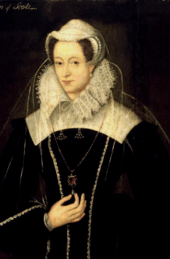Nature: Challenges & Changes
I live in the polders of the Netherlands, within sight of what used to be called the Zuiderzee in the old atlases of my childhood. Outside my window where I write I look onto a large pool of water, formed by the confluence of the streams, or sloots, that surround every field. Our own field is an island, reached by two bridges and we are sloot owners, which means we are responsible for keeping the little waterways clear of weed. These are drainage ditches in reverse. They are there to keep the land moist. This is peatland. If it dries out it will sink, crumble and blow away. You feel its fragility as you walk across it. It trembles ever so softly. People tell me that the Netherlands is dull and flat but that’s not what I see. I see lines of dabbed poplars, plateaus of green above a vast sky, which is often painted by rainbows and always filled with birds. In spring the godwits, oystercatchers, lapwings and redshanks endlessly circle and call, anxious for their nests down in the growing grass. In autumn the sky is alive with whistling wigeon and in deep winter the arctic geese come, barnacles and whitefronts, thousands of them, endlessly weaving and whirling in our skies that are never flat.
I find it deeply moving to live where hundreds of years ago hard-working Dutchmen pushed back the sea to create a temporary waterland which they have shared ever since, more or less harmoniously, with a hundred species of bird, with dragonflies and bush crickets, natterjack toads and flowering rush. When my professional friends visit from abroad, they are astonished by how relaxed all the birds are. Herons or the dabbling wigeon, which in Norway, say, would be gone in a flash, pose for close-ups. Why? The answer is water, people and lack of persecution. Water is life. But the Netherlands is one of the most crowded countries in Europe so if the birds want the life in the water they have to put up with people. Luckily for them the people mostly don’t harass them so a comfortable co-existence has evolved.
It is a truthy universally acknowledged that the camera never lies. But like many such “truths” it’s nonsense. The camera by definition always lies. The act of framing a picture is the biggest lie of all. For fifty years we wildlife filmmakers have been framing our pictures to exclude the embarrassments we don’t want the viewers to see – dozens of safari vehicles crowding the cheetah we are filming, planes flying over the empty Andes, other cruise ships nosing their way in front of our whales. All because we want to portray – and our viewers want to see – a wilderness that mostly no longer exists. When I first visited the Arctic Ocean 40 years ago, the summer pack-ice extended from Northern Svalbard to the North Pole. A polar bear could walk right round the world on it. Now much of it has gone, with God knows what long-term effect on ocean currents and our climate. During the same period, Africa has lost 70 percent of its lions, the Northern white rhino has become functionally extinct and painted dogs have disappeared from much of their range.
And yet. When I was at school, I only knew one other boy who was interested in nature. We’re still friends. Then, it was a deeply unfashionable interest. Now it’s cool. I believe that nature films on television, for all their faults, have played a huge part in shifting public perceptions and helping people to see and care about wildlife and the beauty of our earth. Indeed, I am proud to have been part of this. Growing knowledge and concern can be powerful allies in a crisis. We have already faced down the worst of the pesticide calamity, acid rain and the hole in the ozone layer. Blue whales have recovered from the verge and are visible again in our seas, something I never believed I’d live to see. True wilderness may have mostly gone but what is left is us and the plants and animals around us, all connected and all sharing huge chunks of DNA. The Netherlands has no wilderness, but it has wildness: a humanised landscape enjoying educated co-existence. Perhaps this is not such a bad blueprint for the future.

Stephen Mills is the author of Natural Causes: The Wild Life of a Wildlife Filmmaker, published by Chiselbury.





